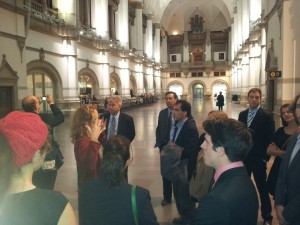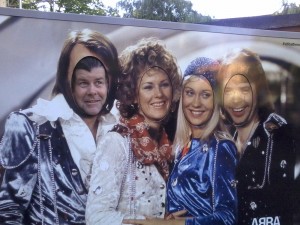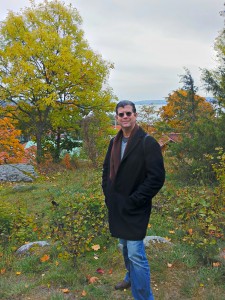Being a Fulbright Scholar Was the Experience of a Lifetime
The year 2013 was a good one for me. In March, I received the Dr. Oscar S. Gluck ISCD Humanitarian Award from the International Society For Clinical Densitometry. But what really enriched my career was receiving a Fulbright Scholar Grant to study in the Medical Epidemiology and Biostatistics Department at the prestigious Karolinska Institutet in Stockholm, Sweden.
My goal was to learn more about the methods and findings of the Karolinska Mammography Project for Risk Prediction of Breast Cancer, or Karma for short. The Karma study has similar goals to the University of California’s Athena Study, to identify women at high risk of breast cancer and target therapies to reduce their risk. As the director of the Breast and Bone Density Group within the Department of Radiology and Biomedical Imaging at UCSF, I had met Per Hall, the Principal Investigator for Karma, at an Athena investigators meeting. He had been invited by Athena to speak on how the two studies might work more closely together. That conversation was in March of 2012, and afterwards, I was convinced I would like to study further at the Karolinska.
I wanted to explore how to combine findings of the Karma and Athena studies to create one of the world’s best-characterized breast cancer cohorts. The larger the cohort, the more powerful and consistent the reporting of breast cancer risk to women could be as part of their mammography visit. When I had heard about the Fulbright program, I knew a scholar grant might allow me to do this.
I started the application process soon after meeting Dr. Hall. The application process took several months, but the Fulbright organization was incredibly supportive, and as soon as I was identified as a possible candidate, they did everything they could to help me complete my application in a timely manner and make me feel like they wanted me to get the award. I applied in August of 2012 and found out that my application was found to be meritorious in December, but I didn’t know I had received the award until March of 2013. In late August, 2013, my wife and I were on our way to Stockholm.
The Fulbright U.S. Scholar Program is all about cultural exchange through scholarship and is awarded from within the State Department. The program provides approximately 800 teaching and/or research grants to U.S. faculty and professionals in virtually all academic and professional fields. Grants are available in over 125 countries worldwide. You not only gain in-depth insight to foreign alternative views and culture, you also serve as an ambassador of the United States. Once you’re a Fulbright alumni, you’re a “Fulbrighter” for life: by character and actions, you will forever be a reflection of the program. When I arrived in Sweden, I instantly felt part of this larger kinship of sorts. Swedish Fulbrighters (Swedish nationals that came to the US on a Fulbright award) gave us tours of some of Sweden’s most interesting sights including the Vasa Warship Museum, the Nordic Museum, and Sweden’s Uppland region.
Because the Karolinska is the institute that awards the Nobel Prize in Medicine, and since two Americans had received that prize last year, the U.S. Embassy received enough tickets for all of us Fulbrights to attend the ceremony where the king and queen of Sweden award the Nobel Prizes.
Spending four months abroad had its challenges. My wife and I were required to get immigration cards and lived in a tiny studio similar to a dorm room. We really felt like immigrants, which gave us insight into what others must experience when coming to the US. I didn’t have a Swedish personal number, which is the key to the Swedish bureaucracy. I couldn’t open a standard bank account, do online banking, arrange for television or internet services in my own name, or even buy food from the Karolinska vending machine. A Swede always had to do those kinds of things for me.
During my time in Sweden, from August through December, the seasons changed from summer to fall and then to winter. Each season had its stunning natural beauty and unique festivals and activities. In the summer, the department took us out to visit ABBA the Museum (yes, the band). In the fall, my wife and I toured the pagan artifacts around Vasteras. I hadn’t anticipated the challenge of keeping your spirits up during the low point of winter, when the sun doesn’t rise until 9:45 in the morning and then sets at 2:30 in the afternoon.
Being part of a different department in a different university was also a terrific experience for me. I had been at UCSF for 16 years, and seeing how they do things at the Medical Epidemiology and Biostatistics Department gave me a new perspective on the things I like about our department. It also exposed me to new ways of doing things that we might consider at UCSF.
To my knowledge, even though there have been several Fulbrights from UCSF, I was the first from the Department of Radiology. I really encourage others, especially the PhD faculty, to consider the unique professional and personal development through the Fulbright program. You just never know what’s going to happen. In my case I enjoyed collaborating with Dr. Hall and his colleagues, and the relationship continues.
To date, two manuscripts have been submitted, and I am co-mentoring a MD/PhD student at the Institutet.




